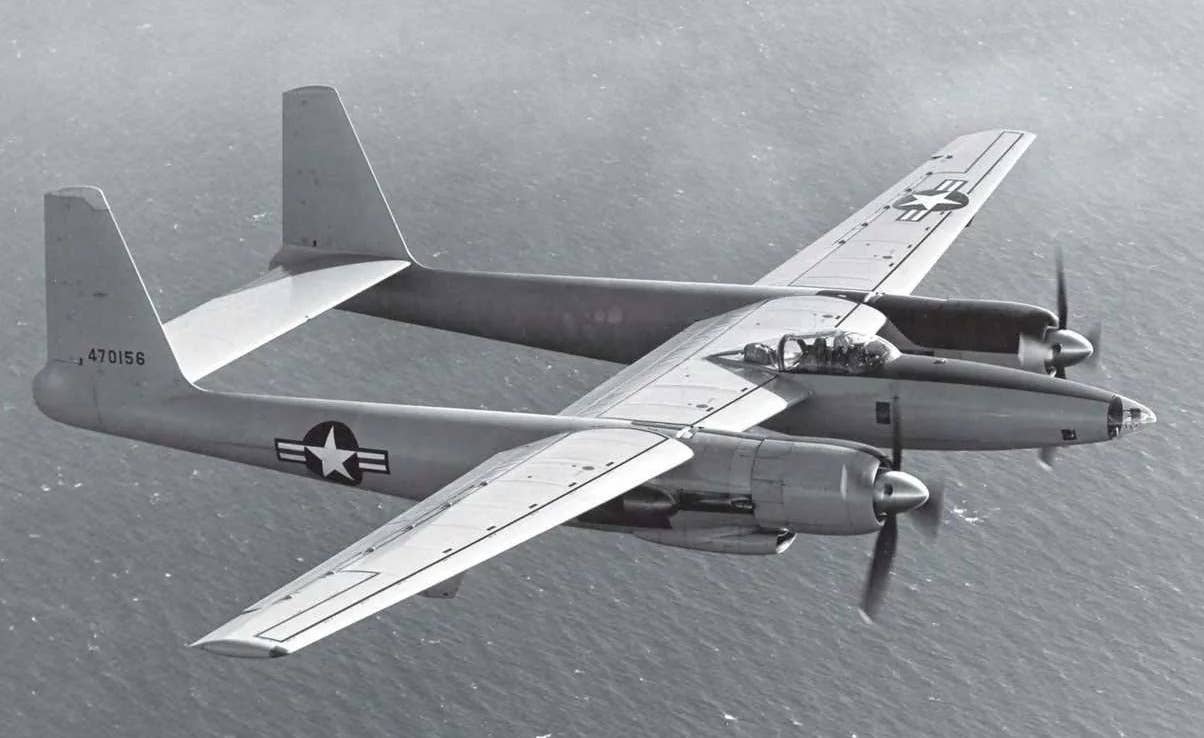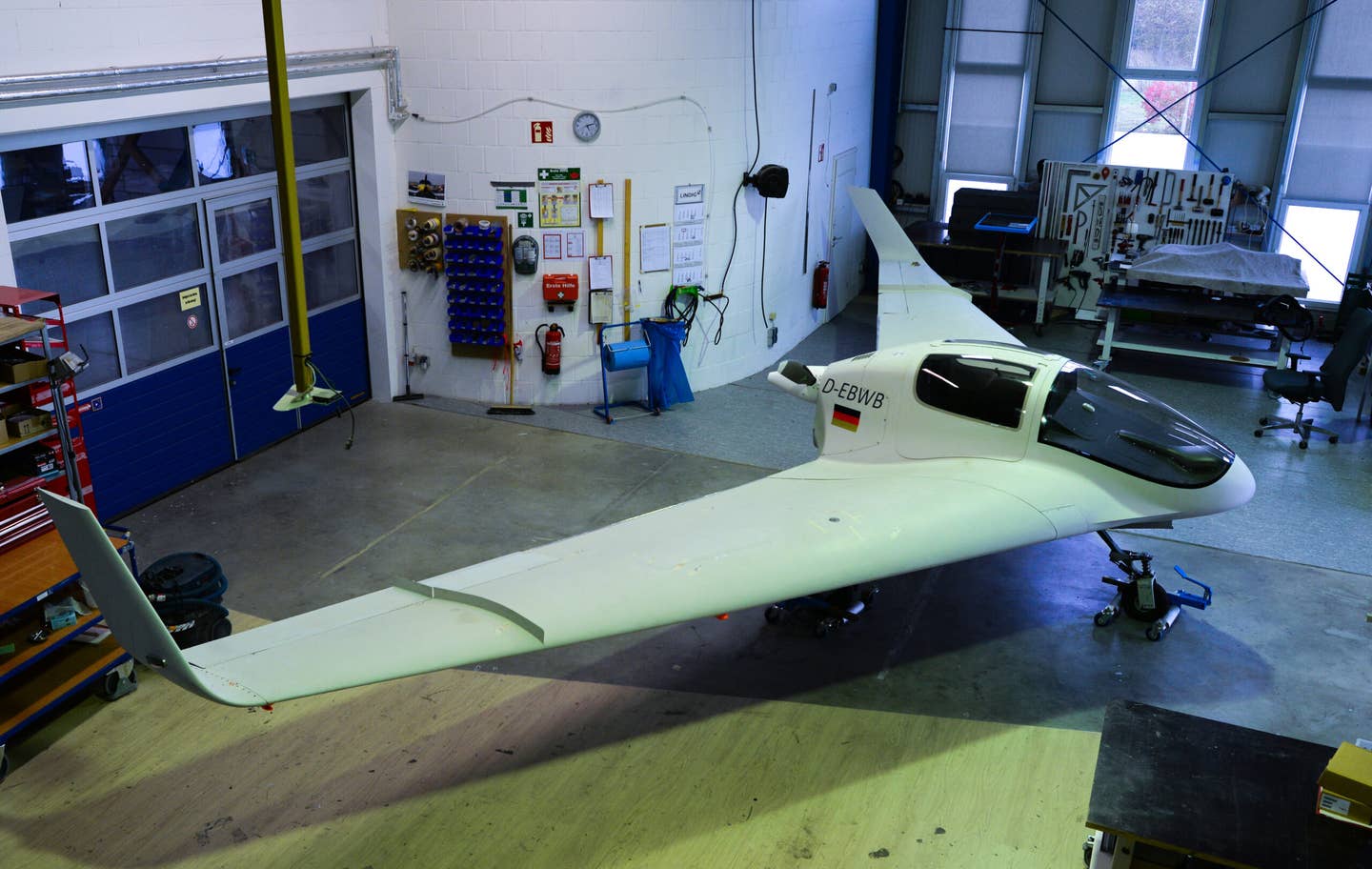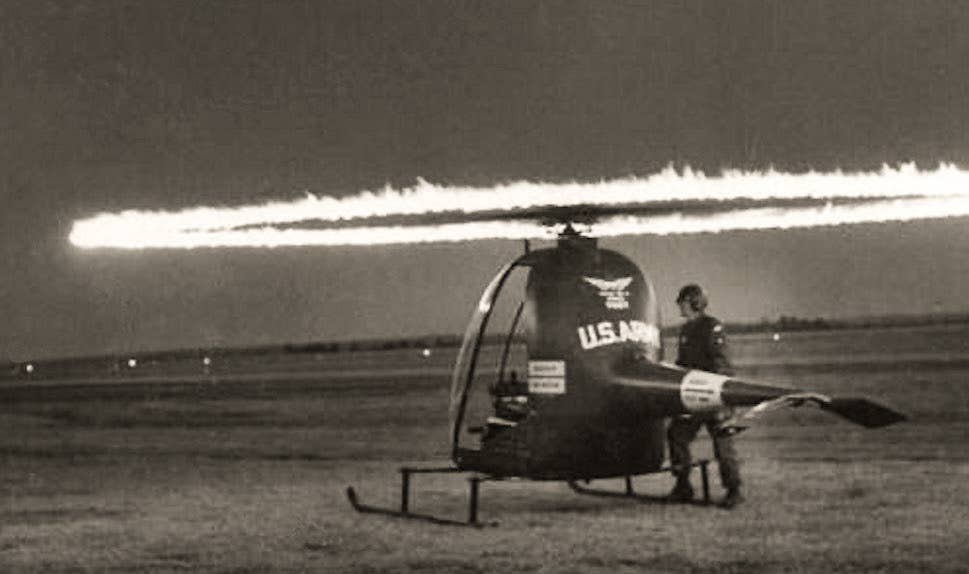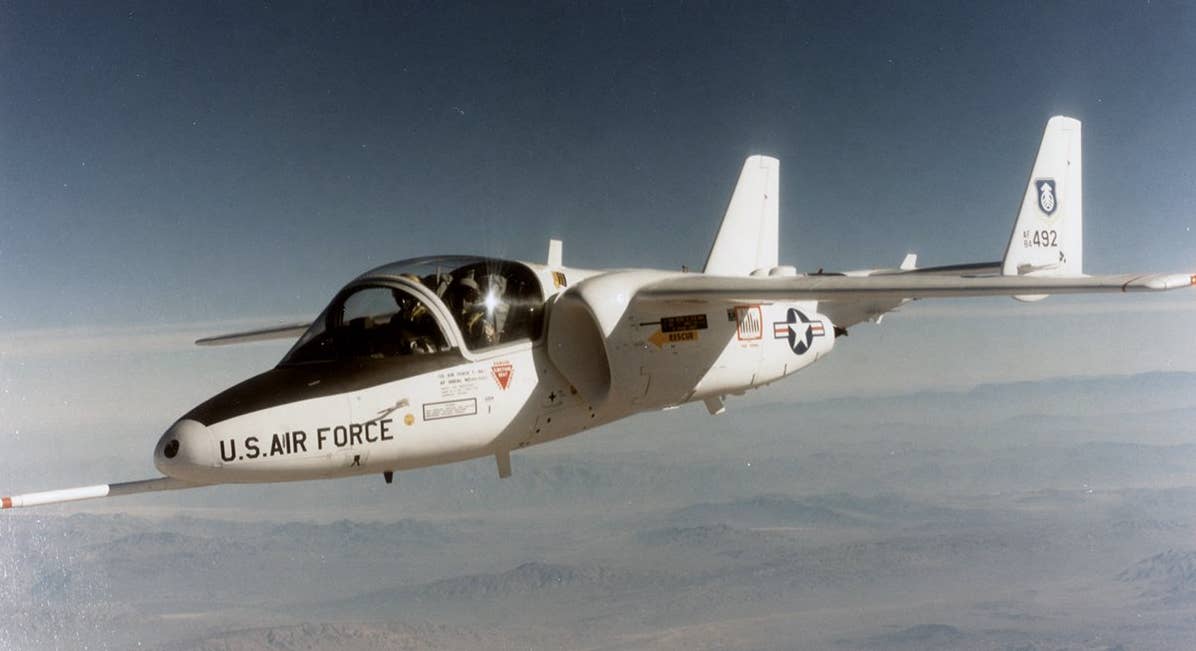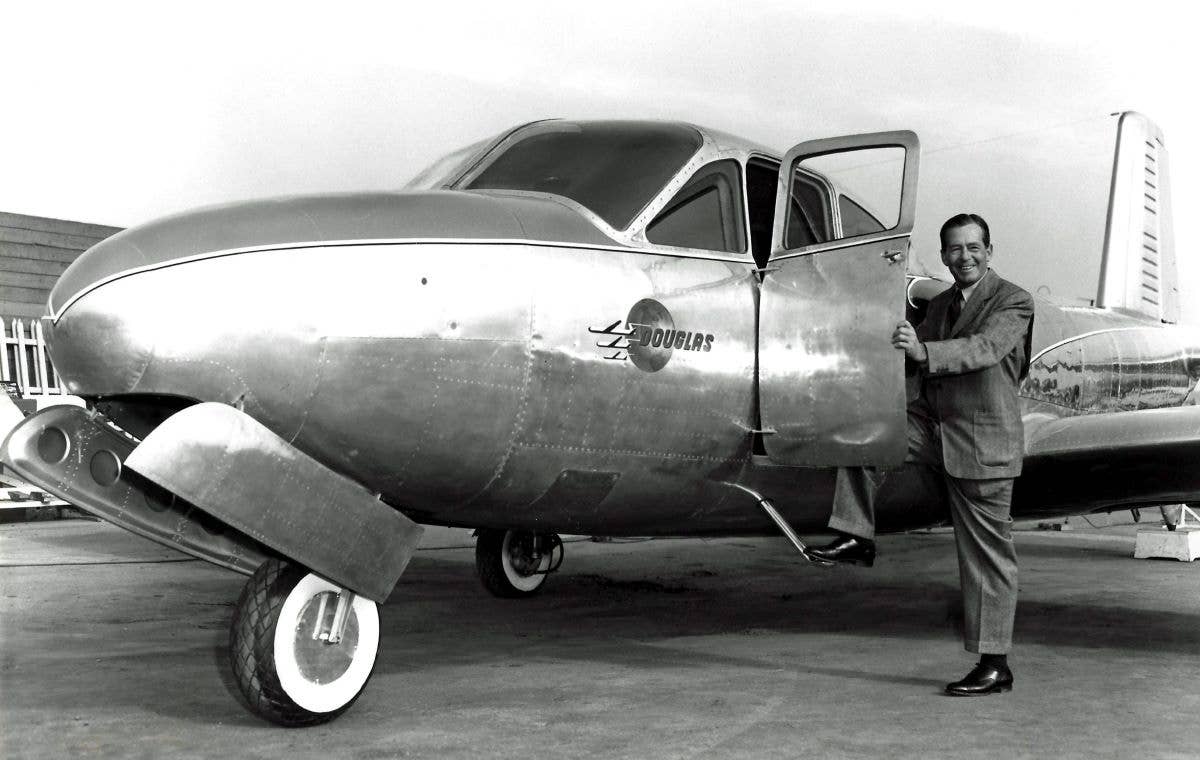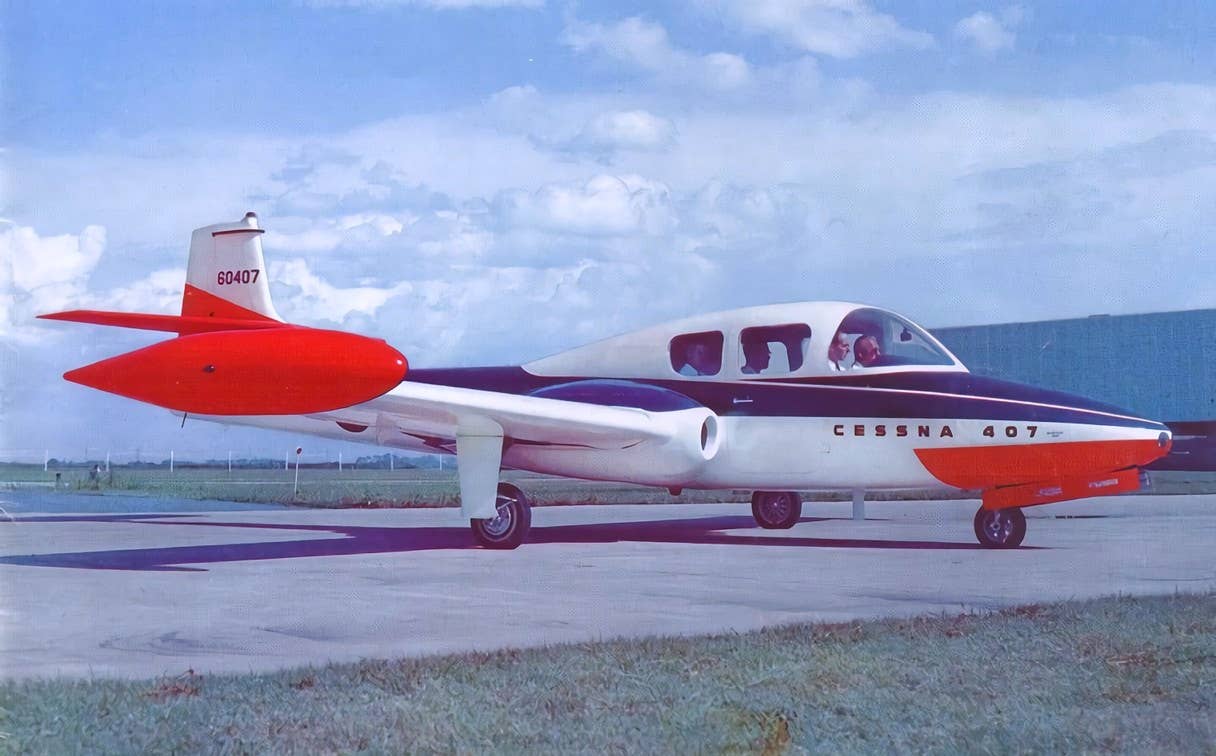Convair Model 48 Charger Featured Stubby Wings
The 1960s-era Convair Model 48 Charger represented an ill-fated attempt to win a military contract competition.
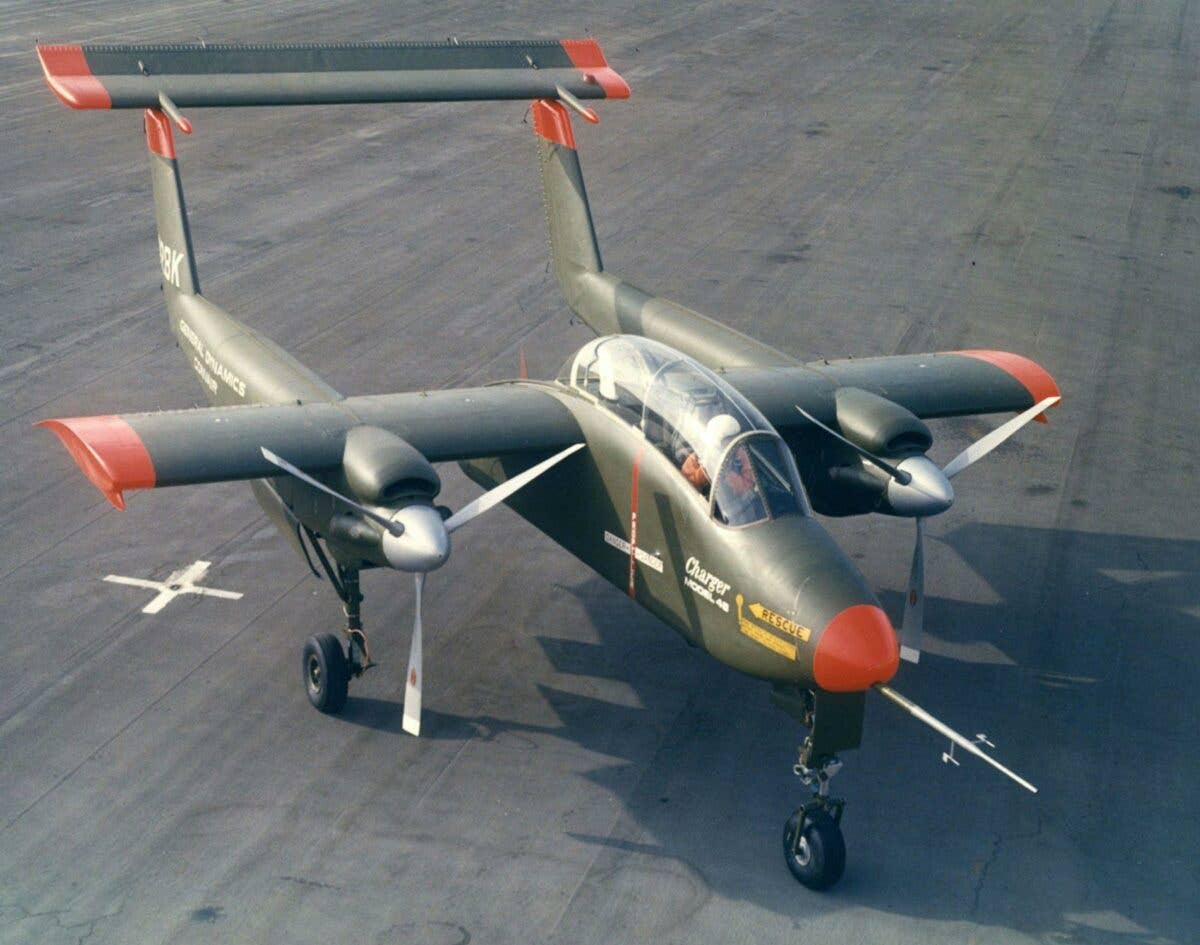
The unconventional, stubby wing gave the Convair Charger exceptional performance and unique proportions. [Courtesy: Convair]
Imagine, for a moment, that you are a young engineer in the early 1960s, fresh out of college and looking for your first job. Luck smiles upon you, and you’re offered a job at Convair, manufacturer of a wide variety of aircraft from interceptors to fighters to airliners. As you report for your first day of work with visions of the magnificent XB-70 Valkyrie strategic bomber streaking through your head, you are informed that you’ll instead be assigned to an odd little turboprop with a top speed of 277 knots.
After coming to terms with the lowly assignment, some closer investigation would have likely cheered you up. The aircraft would be called the Model 48 Charger, which would be Convair’s entry into a competition against eight other manufacturers. Each would create a clean-sheet aircraft proposal to fulfill a contract in which the U.S. Army, Marine Corps, and Navy would ultimately be involved.
The Charger would be required to take off from an aircraft carrier without catapult assistance. It would also be required to operate on floats and from unimproved runways while carrying six troops in addition to the pilot. It was a unique blend of technical requirements. While the project perhaps lacked the prestige of the company’s supersonic offerings, it presented some challenges that must have been intriguing to every engineer assigned to it.
Compared with the proposals from companies like Grumman, Beechcraft, and North American, the Charger stood out with a shockingly stubby wing. While the aircraft itself was not diminutive, with a maximum takeoff weight of more than 10,000 pounds and two 650 hp Pratt & Whitney PT6 turboprops, the King Air-sized machine sported a wingspan only 3 feet greater than that of the 1,100-pound Grumman AA-1. Even after a wing extension early in the test program, the wingspan remained 3 feet less than a Cessna 150.
The secret was prop wash. The wing was designed in such a way that nearly all of it was blanketed in the prop wash from each engine. Because the local wind velocity enveloping the airfoil was therefore accelerated, the wing was able to produce lift at lower indicated airspeeds. Bolstering this performance were flaps that were as long as the wing and extended to an extreme 90 degrees for landing. Inboard Kruger flaps, not unlike those on the Boeing 727, adorned the leading edge.
This resulted in shockingly impressive takeoff and landing performance. Janes’ All the World’s Aircraft lists the Charger’s takeoff and landing distances as each being less than 500 feet. Even more impressively, this is listed as the distance required to clear a 50-foot obstacle. While no conditions or parameters were listed, the numbers are impressive, even if little to no payload was necessary to achieve them.
Depending on engine thrust to maintain so much of the wing’s lift was clearly effective. But like a blown wing, an abrupt loss of engine thrust below a certain airspeed would result in a stall. Should just one engine or propeller fail at a low airspeed, an irrecoverable loss of control could occur.
The final product resembled a clipped-wing OV-10 Bronco, with a twin-boom tail, long-travel landing gear, and a canopy that offered nearly unlimited visibility. Like the Bronco, the tail cone could be opened to reveal a small cargo area. This area was proposed to be used for troops and stretchers.
Intended to fulfill various roles, the Charger was also equipped with ordinance. Four machine guns and five hardpoints could be used for counterinsurgency (COIN) missions. Drop tanks could also be fitted to provide a 2,600 nm ferry range.
Although Convair hustled to take the Charger from paper to first flight in only 40 weeks, the company’s efforts would be for naught. In October 1965, while on its 196th test flight in San Diego,, a test pilot crashed the lone prototype, sustaining serious injuries and damaging the aircraft beyond repair. The exceedingly sparse National Transportation Safety Board report stated that the “military test pilot used improper [engine] shutdown procedures [that] caused [generator] reduction gear pinions [to] seize.”
The report indicates an engine failure occurred, and under “Phase of Operation,” it lists two phases—normal cruise and go-around. Assuming the initial engine failure occurred during cruise and the accident occurred during a go-around, the unconventional engineering that enabled the Charger’s outstanding performance might have contributed to its demise.

Subscribe to Our Newsletter
Get the latest FLYING stories delivered directly to your inbox

